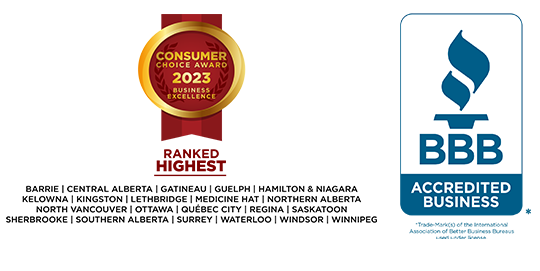The difference between wants and needs when planning your budget
Perhaps the very first financial lesson many of us remember learning as children is the difference between needs and wants. Often it comes from a parent teetering on the edge of their very last nerve trying to explain why we don’t, in fact, need that candy bar in the checkout lane.
Which leads directly to the second financial lesson many of us remember learning: If you beg and scream loud enough, it’s completely okay to cave into the pressure and succumb to a want.

Where is Canadians’ money going?
Most research indicates only about half of Canadians have a consistent budgeting habit. So, it’s fair to say many of us haven’t the faintest idea just how much we spend on wants versus needs in a given month — but there’s enough anecdotal evidence to think it’s quite a bit.
There’s nothing wrong with rewarding yourself and enjoying the fruits of your labour. The trouble comes when over-prioritizing wants gets in the way of meeting your needs — or worse, results in an overwhelming amount of debt.
The good news? As a Licensed Insolvency Trustee, I’ve consistently seen the power just a little bit of awareness can have to reverse this trend and help people regain control over their spending. Let’s take this opportunity to review needs and wants and how these two simple concepts can help you build a bulletproof budgeting habit.
Needs
Try as we might to reduce our spending, some things are simply unavoidable. There are several expenses in your budget that you quite literally cannot live without. These are needs. They are, by definition, necessary for your survival.
Common needs include:
- Food
- Clothing
- Housing (i.e., shelter)
- Heat and light (i.e., utilities)
- Transportation (e.g., to work, to the grocery store, etc.)
- Medical / dental / prescription costs
- Insurance
- Saving for retirement and financial emergencies
Wants
Everyone spends on items, services, and experiences which — while these might bring them joy — are not necessary for their success or survival. These are wants, and for many people, such purchases make up the majority of their budget. Common wants include:
- Televisions
- Tablets
- Jewelry
- Art and home décor
- Travel
- Concerts / movies
- Upgrading for novelty rather than functionality (e.g., new computer, blue jeans, etc.)
- Aesthetic / non-structural home upgrades
- Saving for vacation, non-essential purchases
Common pitfalls
Life would be a lot easier if there was a clear-cut line between your needs and wants. Unfortunately, many purchases have a significant amount of grey area which can make it easy to incrementally overspend and unintentionally sabotage your budget.
Let’s look at several common examples:
Food and groceries
You need to eat; there’s no getting around that. However, you don’t need to buy brand name groceries, fill your cart with impulse purchases like chips and cookies, or dine often at fancy restaurants.
That’s not to say there’s anything wrong with spending a little bit more and treating yourself from time to time. But the difference between spending on your calorie needs and your calorie wants can easily add up to several hundred — perhaps more than $1,000 every year.
Clothing
Living in Canada, you well know the right clothing for the right season can be the difference between life and death. Your chosen profession will also have a significant impact on the kinds of clothing you might need to succeed and perhaps even protect yourself in your chosen role. But this is another place where it’s easy to overspend.
For example: Surely you need a warm, durable parka for those chilly winter months. But you don’t need to spend $500 or even $1,000 on the latest most fashionable brand name that’s currently in vogue.
Again, there’s nothing wrong with splurging on something that fits well and makes you feel confident. But before making that purchase, it’s helpful to remind yourself those extra dollars you’re spending are firmly a want, not a need.
Utilities
Speaking of those chilly winter nights. Surely nothing fits more squarely in the needs column than heating your home, right? Well, that depends. Are you keeping the house at a reasonable temperature — or trying to make it feel like a tropical getaway?
You need to keep the pipes from freezing and create an environment that feels liveable. But you might want to walk around in shorts and a t-shirt while the snow is blustering outside. Dropping the thermostat by a few degrees and throwing on a pair of sweat pants and a sweater could potentially save you more than $1,000 over a given winter.
Weeds
Still, you might be thinking, there are so many purchases that maybe don’t feel as life and death as a need, but still feel more urgent than a want. Let’s call these weeds. They’re important to think about, too, as they can often be necessary — and costly too.
It requires a lot of self reflection to determine what weeds are important to you, and when’s a good time to spend on them. Let’s look at a few examples:
- Automobile — A car isn’t life or death, but if you live somewhere without decent public transportation, it might be unavoidable. The trick is understanding how much you’re willing to spend to purchase, maintain, fuel, and insure it.
- Appliances — Plenty of people can get by without a pressure cooker, a washer and dryer, or expensive stand mixer. Then again, if you’re using these items regularly, or find yourself spending lots at the laundromat, these might be a worthwhile and budget-friendly purchase.
- Mobile phone — It’s nearly impossible to find a payphone these days, so it’s fair to say a mobile phone is almost a clear-cut need for safety and peace of mind. However, few people genuinely need the latest and most expensive smartphone or to upgrade a perfectly good device just because a newer model is available.
- Social costs — There’s no doubt you absolutely need to spend time with friends and family for your overall health and wellbeing. However, there’s also often an unavoidable cost associated with these social activities which can easily get out of hand if you’re not mindful of it.
- Gifts — Certainly, giving gifts is not a need by its strictest definition. But like social costs above, it’s something that helps you build relationships and brings joy into your life. The trick is focusing on gifts that have meaning, rather than just a monetary cost.
Consider the 50/30/20 approach to budgeting
When building a budgeting habit, it can feel overwhelming to account for all your various monthly costs. Harder yet to embrace the tedious process of categorizing your various expenses as needs or wants. The 50/30/20 process might be a good place to begin.
Rather than categorizing all your expenses as household, healthcare, transportation, etc., the only categories you need to remember are:
- 50: Living expenses (i.e., needs) — Set aside roughly half your monthly income to take care of your clear-cut needs such as food, clothing, shelter, etc.
- 30: Discretionary spending (i.e., wants) — Set aside roughly a third of your monthly income for wants and weeds. Don’t fret about the grey areas; if you could survive without spending it, it fits in this category.
- 20: Savings — Set aside roughly a fifth of your monthly income for your retirement savings and any unexpected expenses (e.g., home repair, job loss, etc.).
Track your spending, either by keeping your receipts or logging these in a spreadsheet or app. Take an hour once every pay period to categorize transactions over the previous weeks to ensure you’re sticking to your plan.
Also, keep a journal to make note of what your current needs are and what prompted you to spend on wants or weeds. This will help you better understand your spending habits and gain more control over when, where, and why you spend.
It doesn’t mean giving up on wants completely. But it will help you experience more joy and gratitude when you deliberately bring a want or weed into your life — while almost certainly saving you money.

